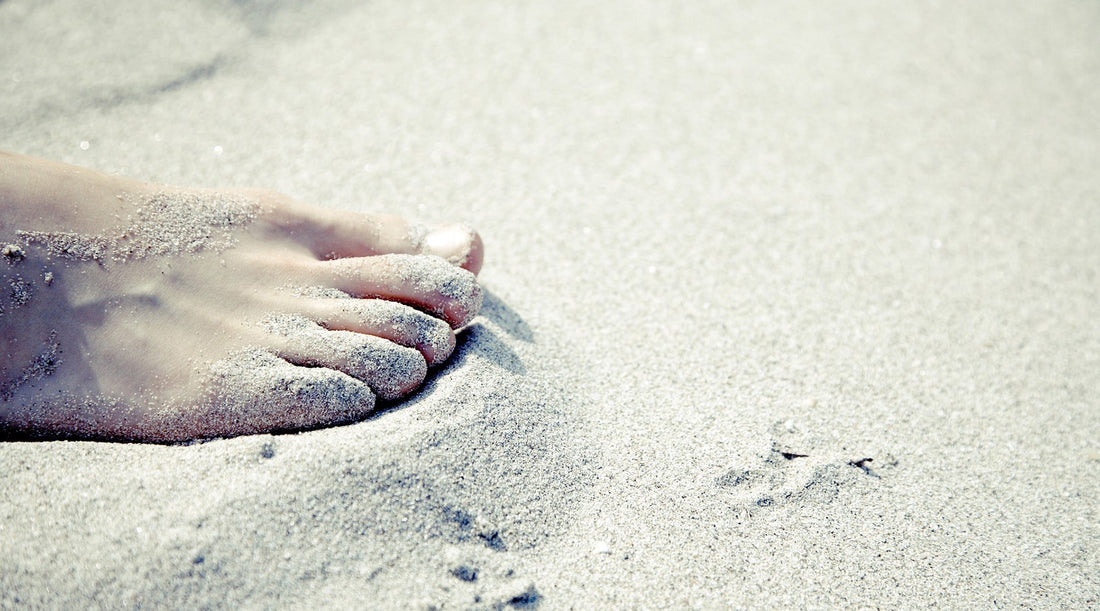A long-distance hike or backpacking trip always carry with it the threat of blisters, which can quickly turn your experience sour. Blisters, caused by friction and moisture, can lead to discomfort and, if left unaddressed, potentially impact your ability to continue hiking.
In the eight tips below, we'll offer a few proven strategies to prevent blisters and keep your feet happy on the trail.
1. Choose the Right Footwear:
- Properly Fitted Boots: Invest in well-fitted hiking boots or trail shoes. Visit a specialized store for professional fitting, considering factors like arch support, toe space, and overall comfort.
- Break Them In: Ensure your footwear is adequately broken in before embarking on a long-distance hike. Gradually increase the duration of wear to allow your feet and boots to adapt.
2. Moisture Management:
- Wicking Socks: Opt for moisture-wicking socks made of synthetic or merino wool materials. These socks draw moisture away from the skin, reducing the likelihood of friction-induced blisters.
- Change Socks Regularly: Bring extra pairs of socks and change them if they become damp. Dry feet are less prone to blister formation.
3. Proper Sock Layering:
- Double-Layer Socks: Consider using double-layer socks, where the inner layer moves with the foot, reducing friction against the outer layer. This can be particularly effective in preventing blisters.
- Sock Liners: Some hikers find success with sock liners, thin synthetic or silk socks worn under hiking socks for additional protection against friction.
4. Lubricate High-Friction Areas:
- Anti-Chafing Products: Apply anti-chafing balms or creams to areas prone to friction, such as heels and toes. These products create a protective barrier, minimizing the impact of rubbing.
- Petroleum Jelly: In the absence of specialized products, petroleum jelly can also serve as a makeshift lubricant to reduce friction.

5. Tape and Bandages:
- Preventive Taping: Use athletic tape or blister-specific tape to preemptively cover areas prone to blisters. This can provide an additional layer of protection.
- Moleskin: Carry moleskin patches to apply on hotspots or areas where you feel friction. Moleskin can act as a protective barrier, reducing the risk of blister development.
6. Proper Foot Care:
- Trim Toenails: Keep your toenails trimmed to prevent them from hitting the front of your boots, which can lead to bruising and blister formation.
- Monitor Hotspots: Regularly check your feet for hotspots or areas of discomfort. Addressing issues early can prevent the development of full-fledged blisters.
7. Foot Powder and Dry Feet:
- Use Foot Powder: Apply foot powder, especially in between your toes, to keep your feet dry and reduce moisture-induced friction.
- Aerate Feet During Breaks: Take breaks to air out your feet. Remove your boots and socks to let your feet breathe and dry, particularly on longer stops.
8. Proactive Adjustments:
- Reassess Gear and Fit: If you notice discomfort or hotspots, take the time to reassess your gear and make necessary adjustments. It's better to address potential issues early on.
- Lace Adjustments: Experiment with different lacing techniques to find a snug fit without creating pressure points. Properly laced boots can contribute to a more comfortable hiking experience.
Conclusion:
Taking care of your feet is one of the most important parts of a long-distance hike. Preventing blisters requires a combination of proper footwear, moisture management, and proactive foot care.
By investing in well-fitted boots, choosing the right socks, and incorporating preventive measures like lubrication and taping, you can significantly reduce the risk of blisters and ensure an enjoyable and blister-free trek.

